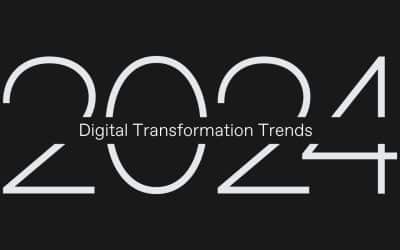Steps for winning over critics and creating a megaphone for your success
Charting a course for a big business development is a large task. Larger, still, is the burden of getting internal buy-in across all departments for the coming changes. Change is hard. That’s why there are books like, Who Moved my Cheese? And my personal favorite – for its title alone – Surrounded by Idiots. Jokes aside, when you’re positioning yourself and your team to champion a new digital initiative, you’re not only fighting against those who may not understand why, or the cost, or the need, you’re fighting against the idea of change itself – and that is a weighty foe.
Here we’ll take you through the process of how to start planning your project, build a solid business case, get internal buy-in and enthusiasm, and reinforce project success with data, data, data. Faced with SMART goals and a clear plan, those who fear change will be relegated to tilting at windmills.
Planning for buy-in
How do you get internal buy-in for your initiatives? Like most aspects of large projects, planning is crucial. Start as early in the process as possible and install a RACI (Responsible, Accountable, Consulted, Informed) model for communication and task driving. Involve key stakeholders early. Involve department heads early, even if they fall outside the project scope. A digital project like new e-commerce, new features, or website re-platforming touches all organizational groups, whether they realize it or not. At the outset, these removed stakeholders can live in the Informed group – alerted to planning but not yet consulted.
Create a meeting cadence that addresses concerns, progress, budget, and resources. Transparency breeds trust and removes the opportunity to be ‘surprised’ by project scope, cost, or timeline.
New initiatives require approval, financing, and proving out ROI. But, in order for your initiative to be a success, you have to look beyond the ROI for just your business area, and make sure every department is onboard and sharing in the success.
The Carrot – What’s in it for me?
The best way to silence a squeaky wheel (who may not see the worth of your project) is to give it the grease. The grease in this case is the cascading implications of your project that affect their department. The best way to do this is to meet with every organizational group and hear their pain points.
Customer service is overwhelmed with calls about X. Procurement doesn’t have enough visibility into the inventory of Y and Z. Shipping struggles when B happens. Sales might not like the idea that after this project, customers can buy online, without a sales rep involved. In this case, perhaps you alleviate their concerns of commissions by creating a model that assigns commission by region purchased, gives reps a percentage of online sales, or shifts commission percentages to incentivize larger-scale deals.
As you collect these pain points, look at your project plan and begin to strategize where these points can be addressed with the solutions you’re developing. This is a great time to involve your digital consultants, e-commerce partner, whoever is partnering with you to create the solution for your company. A good partner should be able to help you create the business case and specifically outline the process or feature that alleviates the pain point for any group.
Build the Business Case
Now that you’ve had conversations across the organization and understand the big picture, it’s time to put together the business case. Adobe has a great blog detailing step-by-step how to go about building one. The first thing to do is create your problem statement. What is no longer tenable and what are the risks of ignoring this problem? Create a compelling story that draws people in, a narrative where they get to be the champion or a cautionary tale. (Tip: people want to be champions.)
If you have an existing relationship, your digital solution partner can help you define and articulate some key points, like visualizing the ideal end state, the software and resources necessary to accomplish it, and the expected cost. They can also share their industry experience to add insight to the market assessment, risk assessment, and project approach.
Internal Communication
Evangelize! Over-communicate. We all have forgotten an appointment, or the reason for a meeting, or a task to accomplish – even important ones. Research suggests that information needs to be repeated at least seven times in order to make it into long term memory. Expect that your message needs multiple repeats to become an established fact with your internal audience.
Once planning is complete and project work begins, continue to involve stakeholders and further-afield department leaders in the lines of communication. Prevention is the best medicine – proactively sharing information and projections can cut off the possibility of scrambling post-project to establish legitimacy and prove project impact.
The core messages communicated to your internal stakeholder audience should be:
- progress (what is done, when things will be done)
- process (how things are changing for the better, what’s coming next)
- outcomes (features created, new usability, defined KPIs, how this will change the business)
Use Data to Prove Your Results
Let the numbers speak for themselves. You’ve done the hard work of defining your project, detailing requirements, and accomplishing the tasks put forth. But, your work isn’t quite done – let the key performance indicators (KPIs) that you outlined pre-project through your business case and your conversations with internal teams demonstrate your success.
As data flows in from your new project, (maybe customer service requests are down online and subscription adoption is up) gather data from other departments to understand correlation and causation. Perhaps customer service survey responses rose 20% as your online service requests dropped, increasing your overall NPS score for the quarter. Accounts receivable might have had a smaller percentage of past-due revenue month over month as those subscription sign ups accelerated.
These are not random events. These examples might be data sets you need to tie together to demonstrate the wide-reaching impact and benefits of your project. Continue to ask why to uncover relational data. Depending on your organization, this might be a novel concept – this data sharing – but it is vital to cross-collaborate to see organization-wide results.
Lay the foundation for these requests early in your planning sessions with department leads. In those sessions you’re not only generating KPIs to track through your project performance, but to highlight KPIs you expect to change within each department. Since we don’t expect you to also be an accountant, a sales leader, a procurement manager and so on, your collaboration with these groups is once again critical to understand the metrics important to them.
Rinse, Repeat
Being the leader of un-energetic (or worse, unwilling) participants can be an exhaustive endeavor, but you can succeed – and each success will make the next one easier to come by. By starting early, developing a rapport with internal leaders and listening to their current issues, over-communicating and delivering indisputable data, you will silence any squeaky wheel decrying your project and achieve the internal buy-in you need. Your thorough approach and insightful data will display the big picture, writ large over your organization’s goals.
We at TMG understand that digital projects are far more wide-reaching than just the technology or digital teams. We also know that planning and approval for such projects requires well thought out strategy, design, and technical evaluation. We’ve worked with enterprise B2B companies for decades to lead them through the stages of digital maturity, enabling the right strategy and platforms at the right time for their current and future business goals. Our process and expertise deliver the future of customer experience. Let’s talk if you’re ready to take the next step into digital transformation.




